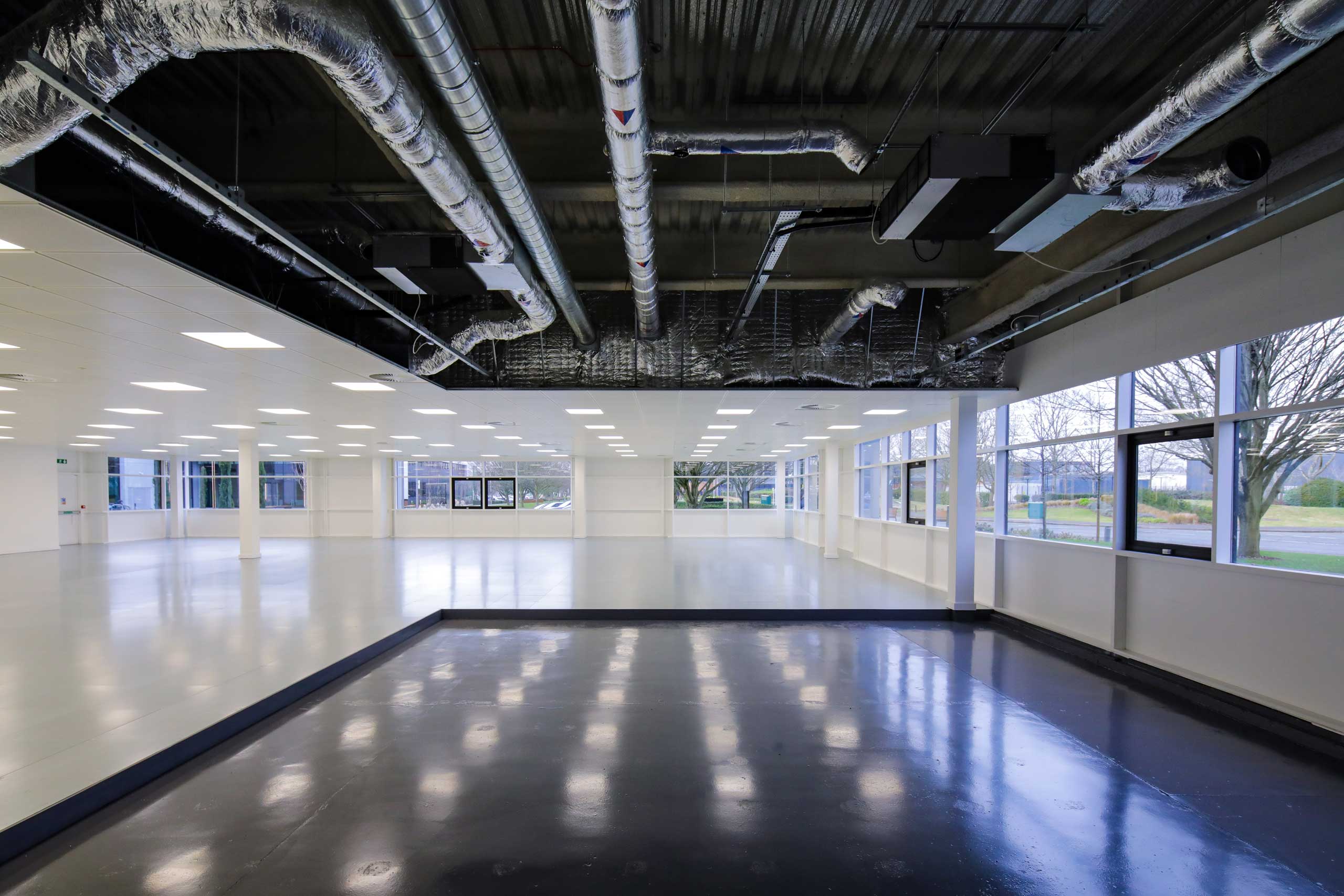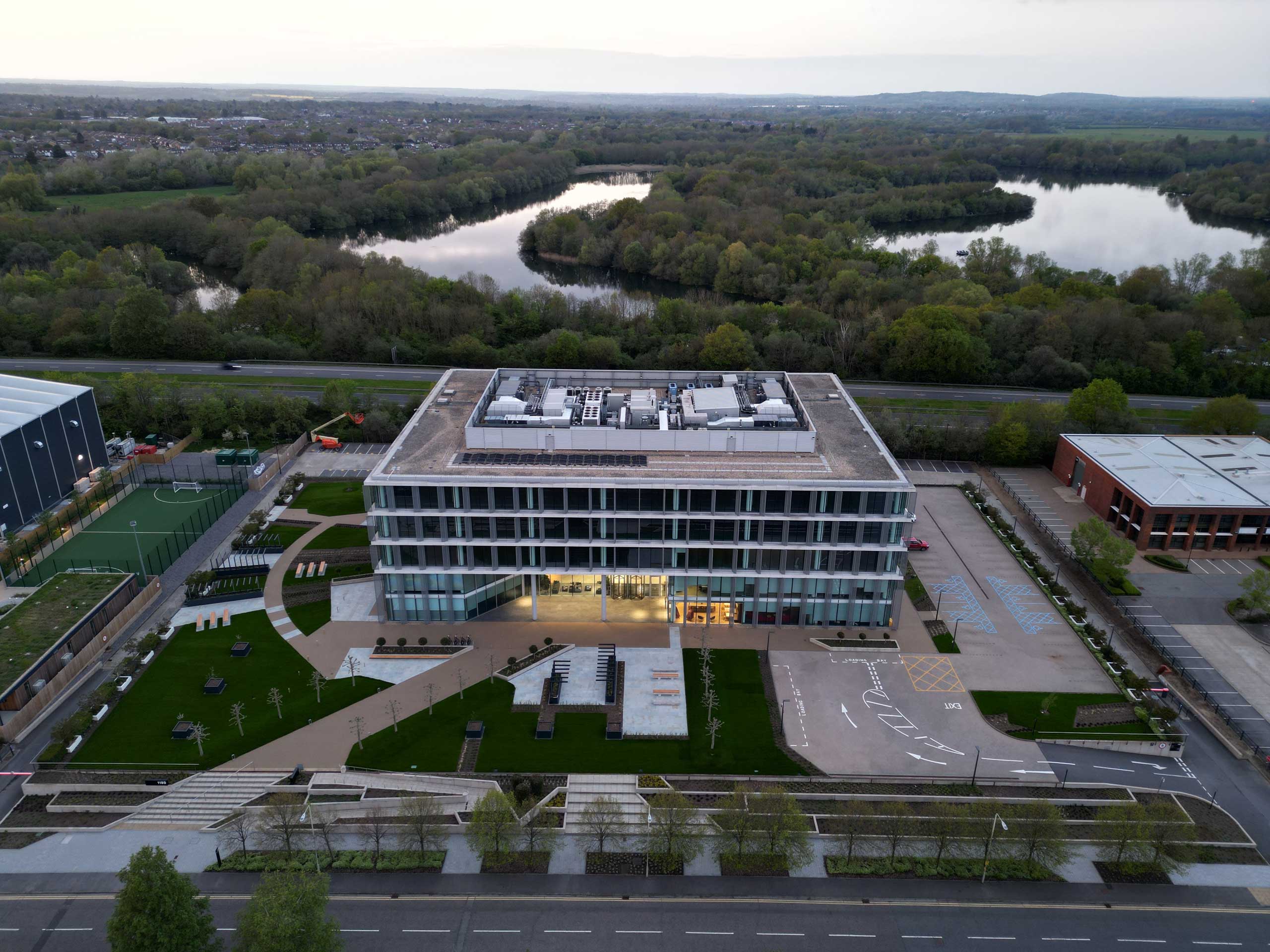Creating a commercial office space where people love working is crucial for productivity and satisfaction. While factors like ergonomic furniture and calming decor are often considered, the impact of lighting is frequently overlooked.
However, studies have shown that appropriate office lighting can significantly enhance concentration, efficiency, mood, and overall well-being, ultimately boosting productivity. Here, we shine a light on this important issue.
The benefits of appropriate office lighting
When the lighting conditions in a commercial office space are tailored to support focused work, employees can experience a range of benefits. Improved concentration and efficiency are among the most notable advantages. Suitable lighting levels can reduce eye strain, headaches, and fatigue, enabling employees to remain attentive and productive for longer periods.
Additionally, well-designed lighting can positively impact mood and energy levels, helping to make for a more positive and energetic work environment.
The science behind lighting
The relationship between lighting and productivity is rooted in the intricate workings of the human brain and body. Lighting influences various factors of concentration including:
- Alertness
- Focus
- Visual accuracy
- Circadian rhythms
Adequate lighting levels promote better visual acuity, enabling employees to perform tasks with greater precision and reducing the likelihood of errors.
Scientists have consistently demonstrated the benefits of optimal lighting conditions, proving that exposure to natural light improves cognitive performance, mood, and overall well-being.
Natural versus artificial light
While both natural and artificial lighting can contribute to a productive work environment, each has its unique advantages and drawbacks. Natural sunlight is considered the ideal light source as it helps regulate our circadian rhythm, promoting more consistent energy levels throughout the day. However, in many office settings, relying solely on natural light may not be feasible due to building design or location.
The good news is that artificial lighting, when properly implemented, can mimic the benefits of natural light and can support alertness and focus. However, it’s crucial to strike a balance, as excessively cool or warm colour temperatures can disrupt circadian rhythms and cause eye strain or fatigue.
Lighting for energy and mood
In addition to its effects on productivity, lighting plays a significant role in influencing energy levels and moods in the workplace. Exposure to bright light, particularly in the morning hours, can help promote wakefulness, setting the tone for a productive day. Conversely, dimmer lighting in the evening can support the production of melatonin, facilitating a smoother transition into the sleep cycle.
Conclusion
The impact of lighting on productivity should not be underestimated. By implementing the right lighting conditions in a commercial office space, employers can create an environment that supports employee well-being, concentration, efficiency, and overall performance. Whether through natural light exposure, strategically using artificial lighting or a combination of both, getting lighting design right can lead to a more engaged, productive, and satisfied workforce.
Commercial office space in the perfect working environment
Winnersh Triangle is a 1.5 million sq ft mixed-use business park located in Reading, with a wide range of rented workspaces, including major headquarters buildings, grade-A offices and start-up office suites. To learn more, get in touch with us today.








